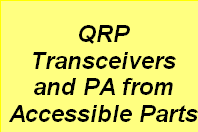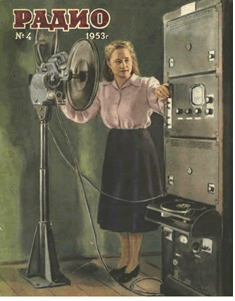


Antentop is FREE e-magazine devoted to Antennas and Amateur Radio an
Special page devoted to
HF Receiver for Beginner Ham

Custom Search
|
ANTENTOP-
01- 2015, # 019
|
HF Receiver for Beginner Ham |
|
|
|
||
|
|
||
|
Credit Line: Radio # 4, 1953: pp.: 26- 29 |
By: Viktor
Lomanovich, UA3DH |
|
|
The HF Tube Regenerative Receiver is a classical design
of the Tube Era. Somebody gave me magazine with the article at
the 70s. I did the receiver and got very good result. I have received
lots of amateur stations with the receiver. Then the receiver
was remade by me in general coverage HF- Receiver. I could receive
with great quality forbidden BBC, Voice of America lots broadcasting
stations and easy found at those times "Numbers Stations."
Design of my receiver was not strictly followed by the article.
Later I made several such receivers for 19, 16 and 13- meter broadcasting
bands. Some people asked me did it for receiving BBC and Voice
of America that were strongly jammed at others broadcasting bands. However, I have seen (and heard its work) this receiver
made strictly according to the article. It was in Kharkov, when
I studied at the Radio and Electronics University. The receiver
was made at the far 50s and still used at one Ukraine Amateur
Station as a backup receiver. The receiver works well with any types of the tubes.
It works good at low voltage, as I remember, 25 Volts was enough
for the receiver. Nominals of the resistors and capacitors are
not critical. Tolerance in 30- 50% is okey.
|
Radio # 4, 1953 Front Cover RF Stage (Tube 1) allows use a short wire as antenna.
If you would use good long wire you need decrease capacity of
the capacitor C5 to 1- 8- pF. To make
general coverage HF Receiver you need use dual variable capacitor
to tune input and regenerator inductors. Take attention to the
feeding of the heating of the tubes. At the receiver it is used
artificial ground to eliminate hum in the phones. Battery operated
(or DC powered) heating would be a good decision. |
|
 Title of the Article |
||
|
Page- 85 |
||
 |
 |
|
 |
Just for Fun:

Powered byIP2Location.com
Thanks for your time!
Last Updated:
January 5, 2020 19:31





